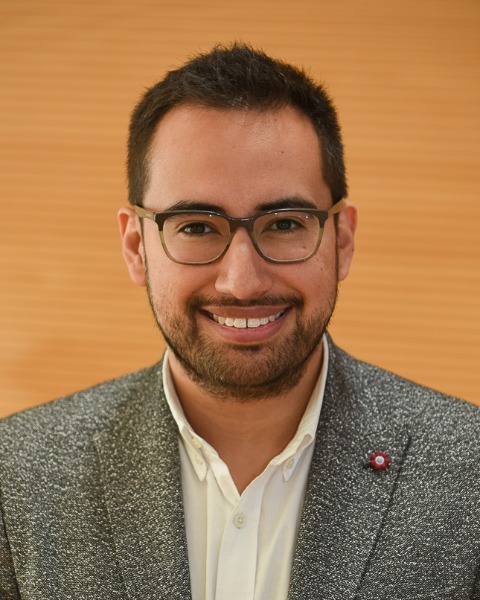Treatment of Newly Diagnosed Myeloma - Non-Transplant Eligible
Poster Session 1
P-120: Impact of exclusion from clinical trials in non-candidate transplant patients with newly diagnosed multiple myeloma
Wednesday, September 27, 2023
1:30 PM - 2:30 PM EEST

Luis Gerardo Rodríguez-Lobato, MD, PhD
Hematologist
Hospital Clínic de Barcelona
Barcelona, Catalonia, Spain
Introduction: Medical societies recommend the inclusion of newly diagnosed multiple myeloma (NDMM) patients in clinical trials (CTs), but the actual number of patients who cannot be included and the associated prognosis remains unknown. Furthermore, there are concerns about the generalization of CT results to real-world clinical practice due to strict patient recruitment criteria. Our objective was to analyze the main causes of exclusion of non-transplant-eligible NDMM patients from CTs and to evaluate the outcomes of patients treated within or outside of CTs.
Methods: We included 211 NDMM patients between 2003 and 2017. The above-mentioned interval was divided into three time periods (period 1: 03-07, period 2: 08-12, and period 3: 13-17). 106 (50%) received treatment outside of CTs (OCT), while 105 patients (50%) were included in a CT (89% in a phase III CT); among the included patients, 43 (40%) were randomized to the control group (CG), and 62 (60%) were assigned to the experimental group (EG). CT inclusion was analyzed as a time-dependent covariate.
Results: Patients included in CTs were younger, had better renal function, and had a better ECOG performance status. The main causes for non-inclusion in CTs were comorbidities (41%), ECOG>2 (30%), renal insufficiency (14%), very advanced age (12.3%), and patient refusal (10%). The number of days between diagnosis and treatment initiation was longer for patients included in CTs (CT=27.5 vs. OCT=17; P=0.002). The complete response rate was similar in the first two analyzed periods regardless of the type of treatment received, while in the last period, the EG group showed an improvement (period 3: EG=28% vs. CG=18% vs. OCT=3%; P< 0.001). The median follow-up for the entire population was 46 months. The median progression-free survival (PFS) was similar in the first two periods (03-12; P=NS), showing only a benefit in the EG in the last period (EG=32 vs. CG=17.5 vs. OCT=15 months; P< 0.001). The median overall survival (OS) was longer in patients included in CTs (EG and CG) compared to the OCT group in the two last studied periods (period 2: EG=75 vs. CG=57 vs. OCT=26 months; period 3: EG=not reached vs. CG=71 vs. OCT=36; P< 0.001).
Conclusions: Half of the non-transplant candidate NDMM patients cannot be included in CTs because they do not meet the inclusion criteria, primarily due to the presence of comorbidities. Patients included in CTs, even those randomized to the control group, have a longer OS than non-included patients. This OS benefit is due to a selection bias, which hinders the extrapolation of CT results to real clinical practice and should be considered when selecting treatment for patients who usually do not meet the inclusion criteria.
Methods: We included 211 NDMM patients between 2003 and 2017. The above-mentioned interval was divided into three time periods (period 1: 03-07, period 2: 08-12, and period 3: 13-17). 106 (50%) received treatment outside of CTs (OCT), while 105 patients (50%) were included in a CT (89% in a phase III CT); among the included patients, 43 (40%) were randomized to the control group (CG), and 62 (60%) were assigned to the experimental group (EG). CT inclusion was analyzed as a time-dependent covariate.
Results: Patients included in CTs were younger, had better renal function, and had a better ECOG performance status. The main causes for non-inclusion in CTs were comorbidities (41%), ECOG>2 (30%), renal insufficiency (14%), very advanced age (12.3%), and patient refusal (10%). The number of days between diagnosis and treatment initiation was longer for patients included in CTs (CT=27.5 vs. OCT=17; P=0.002). The complete response rate was similar in the first two analyzed periods regardless of the type of treatment received, while in the last period, the EG group showed an improvement (period 3: EG=28% vs. CG=18% vs. OCT=3%; P< 0.001). The median follow-up for the entire population was 46 months. The median progression-free survival (PFS) was similar in the first two periods (03-12; P=NS), showing only a benefit in the EG in the last period (EG=32 vs. CG=17.5 vs. OCT=15 months; P< 0.001). The median overall survival (OS) was longer in patients included in CTs (EG and CG) compared to the OCT group in the two last studied periods (period 2: EG=75 vs. CG=57 vs. OCT=26 months; period 3: EG=not reached vs. CG=71 vs. OCT=36; P< 0.001).
Conclusions: Half of the non-transplant candidate NDMM patients cannot be included in CTs because they do not meet the inclusion criteria, primarily due to the presence of comorbidities. Patients included in CTs, even those randomized to the control group, have a longer OS than non-included patients. This OS benefit is due to a selection bias, which hinders the extrapolation of CT results to real clinical practice and should be considered when selecting treatment for patients who usually do not meet the inclusion criteria.
